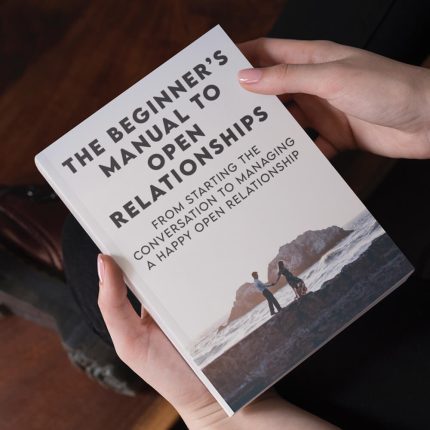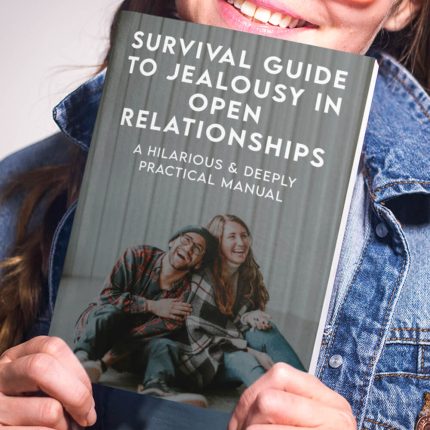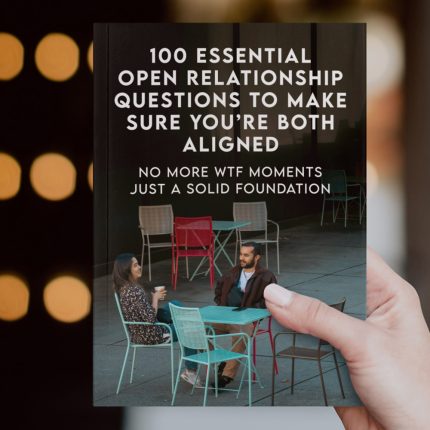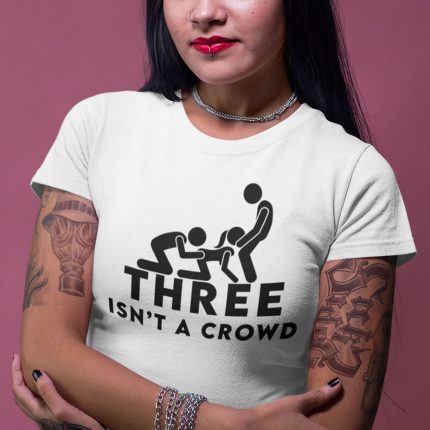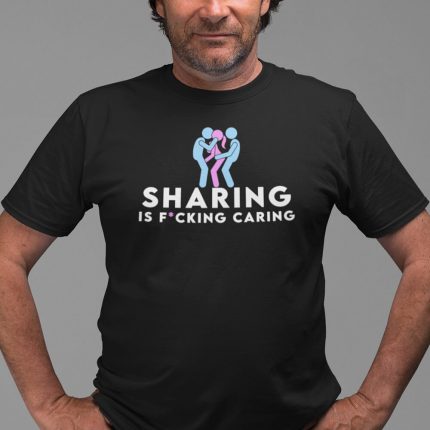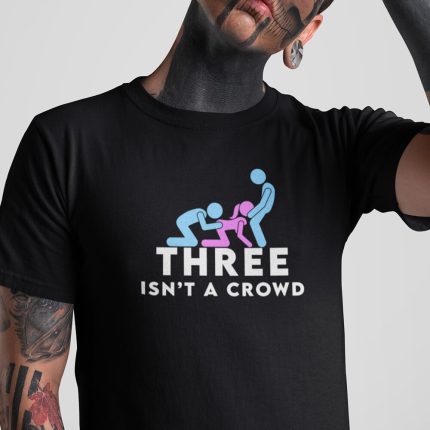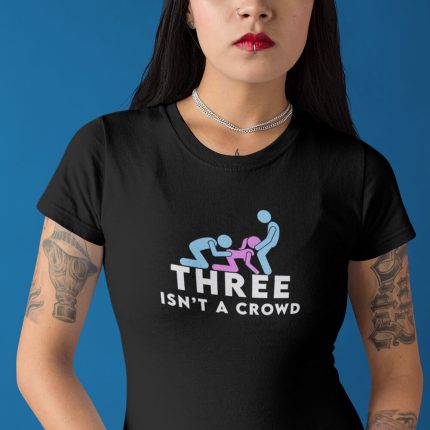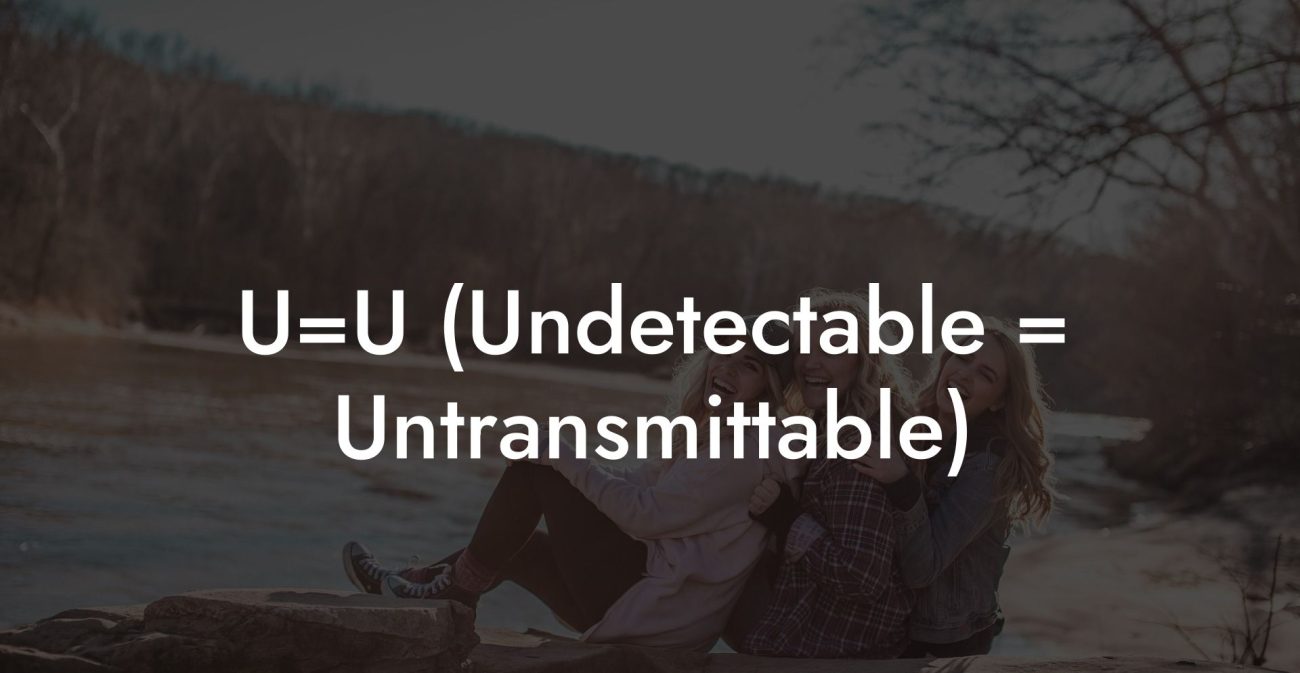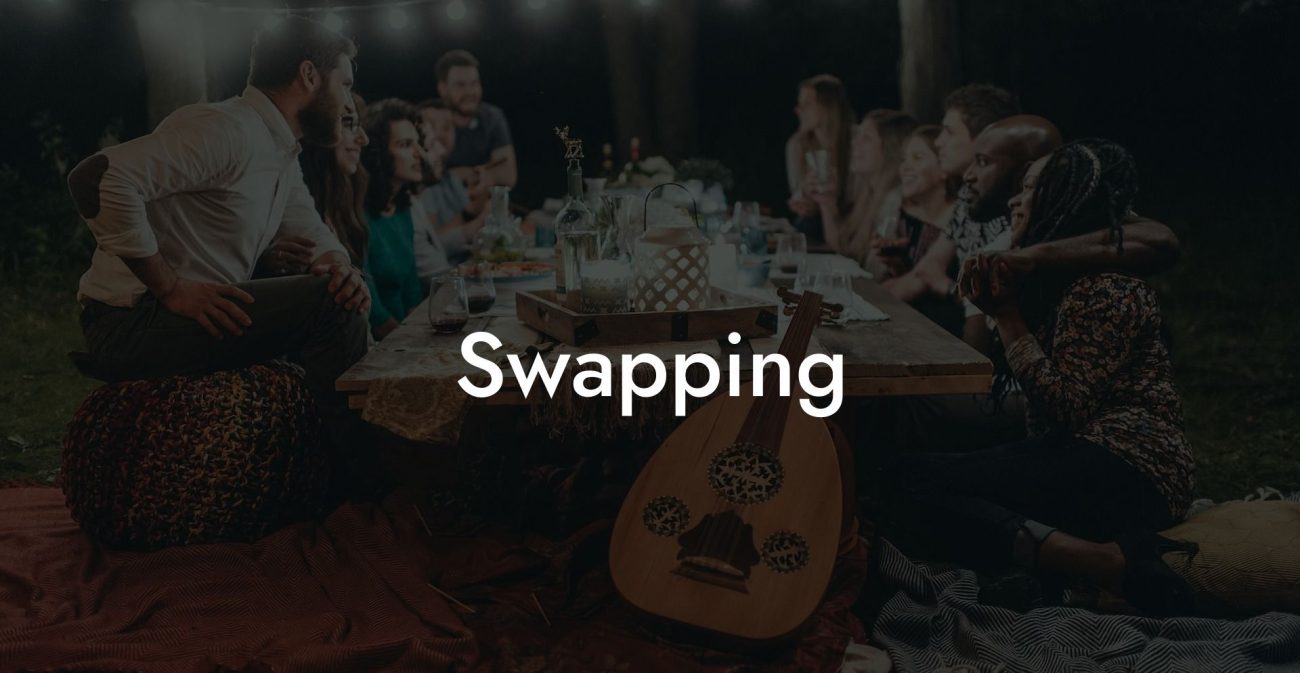Boundary Negotiation

Ever tried negotiating a group project where everyone insists they’re right, but instead of grades, you’re managing your heart? Welcome to the wild, wonderful world of boundary negotiation in ethical non monogamy – where setting limits is as crucial as choosing the right pizza toppings for a Friday night! In this article, we’ll explore the art (and occasional science) of boundary negotiation in non monogamous relationships, sharing hilarious anecdotes, practical strategies, and real-life insights to help you create a relationship network that’s as smooth as a well-orchestrated group hug.
Have you ever wondered if monogamy is just a stupid little experiment? Open relationships, polyamory, relationship anarchy...find out which relationship dynamic suits you best with our one minute relationship test. See if you are just conforming to "societal norms". Reveal your truth >>
Quick Links to Useful Sections
- The Ethical Non Monogamy Term: Boundary Negotiation
- What Is Boundary Negotiation?
- Why Is Boundary Negotiation Essential?
- The Art of Negotiation: More Than Just a Chat
- Steps to Successful Boundary Negotiation
- 1. Start With Self-Awareness
- 2. Communicate Openly and Honestly
- 3. Collaborate on a Boundary Agreement
- 4. Revisit and Revise Regularly
- 5. Use Digital Tools for Organization
- 6. Seek Professional Guidance if Needed
- The Impact of Boundary Negotiation on Relationship Dynamics
- Fostering Trust and Security
- Enhancing Communication and Emotional Intimacy
- Promoting Personal Autonomy and Growth
- Preventing Conflict and Reducing Stress
- Frequently Asked Questions (FAQ)
- Resources and Community Support: Your Next Steps
The Ethical Non Monogamy Term: Boundary Negotiation
What Is Boundary Negotiation?
Boundary negotiation is the process of openly discussing and agreeing on the limits and guidelines that protect the emotional, physical, and mental well-being of all partners in a non monogamous relationship. It’s like the ultimate negotiation table where everyone gets a say on who gets the last slice of pizza – only here, it’s about setting expectations for how you interact, how much time you spend with each other, and what kinds of experiences are acceptable.
In ethical non monogamy, this negotiation isn’t a one-time contract; it’s an ongoing conversation that evolves with your relationships. It involves honest communication, mutual respect, and a willingness to adapt as feelings, circumstances, and desires change.
Why Is Boundary Negotiation Essential?
Without clear boundaries, even the most loving relationship can turn into a free-for-all game of “Guess What I Did Today?” – often ending in confusion, hurt feelings, or awkward silences. Boundary negotiation helps to:
EXPLORE OUR ETHICAL NON-MONOGAMY & OPEN RELATIONSHIP SHOP
👨💻👩💻 Digital Store (Instant Download)
🍆💦 Clothing Store (Worldwide Delivery Available)
Real Men Share Pop Art T-Shirt (Black)
$29.99Multiple Lovers - Sharing Is Caring Unisex T-Shirt (Black)
$29.99Three Isn't a Crowd Unisex T-Shirt (White)
$29.99Sharing Is Caring Unisex T-Shirt (Black)
$29.99Three Isn't a Crowd Unisex T-Shirt (Black)
$29.99I Love Watching Pop Art T-Shirt (White)
$29.99It's Not Cheating If He Watches T-Shirt (Black)
$29.99Sharing Is Caring Daddy Cap (Black)
$39.99I Love Watching Pop Art T-Shirt (Black)
$29.99Fuck Each Other Not The Planet Unisex T-Shirt (Black)
$29.99Real Men Share Pop Art T-Shirt (White)
$29.99Fuck Each Other Not The Planet Unisex T-Shirt (White)
$29.99- Establish Clear Expectations: It sets the groundwork for what each partner can expect, reducing misunderstandings and building trust.
- Protect Emotional Well-Being: It creates safe spaces where partners feel secure, respected, and understood.
- Prevent Conflict: By clarifying limits and responsibilities, it minimizes the risk of emotional fender benders.
- Encourage Personal Growth: Negotiating boundaries requires self-reflection and honest dialogue, which can lead to greater self-awareness and stronger relationships.
The Art of Negotiation: More Than Just a Chat
Boundary negotiation isn’t a formal debate with a mediator (unless you choose to bring one in), but it does require a strategic approach. It’s about finding a balance between personal autonomy and the collective well-being of your relationship network. The process involves:
- Self-Reflection: Knowing your limits, needs, and triggers before you even sit down to talk.
- Open Dialogue: Creating a safe space where every voice is heard, and no one’s feelings are minimized.
- Negotiation and Compromise: Recognizing that not everyone will get everything they want all the time—and that’s okay!
- Flexibility: Being prepared to revisit and revise your boundaries as circumstances change.
Steps to Successful Boundary Negotiation
1. Start With Self-Awareness
Before you can negotiate boundaries with others, you need to understand what you need to feel secure and fulfilled. Ask yourself:
- What activities or behaviors make me feel respected?
- Where do I draw the line in terms of emotional or physical involvement?
- What are my non-negotiables?
- How do my needs change in different situations?
Write down your thoughts to form a clear picture of your boundaries. This clarity is the foundation of any successful negotiation.
2. Communicate Openly and Honestly
Once you’ve established your personal boundaries, the next step is to share them with your partner(s). Be transparent about your needs and listen actively when others share theirs. Use “I” statements to express how you feel rather than assigning blame.
- Example: Instead of saying, “You never give me time,” try “I feel lonely when we don’t spend quality time together.”
- Regular Check-Ins: Schedule routine conversations to revisit and adjust your boundaries as needed.
3. Collaborate on a Boundary Agreement
Consider creating a written or digital document that outlines the agreed-upon boundaries. This can include:
- Emotional Boundaries: How much personal information you share about external encounters.
- Physical Boundaries: Rules for safe sexual practices and the frequency of external interactions.
- Time Boundaries: How much time is allocated to the primary relationship versus external connections.
- Digital Communication: What information is shared on social media or in group chats.
4. Revisit and Revise Regularly
Relationships are dynamic, and so are your needs. Set aside time—perhaps every few months—to review your boundary agreement. This helps ensure that your guidelines evolve with your relationship and that everyone remains comfortable and respected.
5. Use Digital Tools for Organization
In our digital age, technology can be a huge asset in boundary negotiation. Tools like shared calendars, project management apps, and group messaging platforms can help you keep track of agreements and coordinate schedules effectively.
- Shared Calendars: Plan quality time with each partner and ensure that external encounters don’t conflict with your primary commitments.
- Digital Note-Taking: Use apps like Trello or Google Keep to document and update your boundary agreements.
6. Seek Professional Guidance if Needed
If negotiating boundaries becomes particularly challenging, consider seeking help from a therapist or counselor experienced in ethical non monogamy. Professional guidance can provide tools to manage emotions, improve communication, and facilitate conflict resolution.
The Impact of Boundary Negotiation on Relationship Dynamics
Fostering Trust and Security
Clear boundaries are the backbone of trust in any relationship. When everyone knows what to expect, there’s less room for misunderstandings and hurt feelings. This, in turn, builds a secure and supportive environment where all partners can thrive.
Enhancing Communication and Emotional Intimacy
Regular negotiation of boundaries encourages open dialogue, which not only prevents conflicts but also deepens emotional intimacy. By discussing your needs and concerns, you foster a deeper understanding and connection with your partner(s).
Promoting Personal Autonomy and Growth
Boundary negotiation allows each partner to maintain their individuality while contributing to a collective relationship network. It empowers you to pursue personal growth and self-care without compromising the integrity of your relationships.
Preventing Conflict and Reducing Stress
When boundaries are clearly defined and agreed upon, there is less ambiguity about acceptable behavior. This clarity reduces the likelihood of conflicts and minimizes the stress associated with uncertainty and miscommunication.
Frequently Asked Questions (FAQ)
1. What is boundary negotiation in ethical non monogamy?
Boundary negotiation is the process of discussing and agreeing on limits and guidelines that protect the emotional, physical, and mental well-being of all partners in a non monogamous relationship.
2. Why is boundary negotiation important?
It is essential for establishing clear expectations, preventing misunderstandings, protecting emotional safety, and fostering trust within the relationship.
3. What types of boundaries should be discussed?
Important boundaries include emotional, physical, time, and digital boundaries—covering everything from safe sexual practices to how much personal information is shared.
4. How do I determine my personal boundaries?
Self-reflection is key. Consider what makes you feel safe, respected, and fulfilled in a relationship, and write down your non-negotiables.
5. How should I communicate my boundaries to my partners?
Use open and honest dialogue, employing “I” statements to express your feelings and needs. Encourage feedback and work together to set mutually agreeable limits.
6. What is a written boundary agreement?
It’s a documented set of guidelines that outlines the emotional, physical, time, and digital boundaries agreed upon by all partners. This helps prevent misunderstandings and provides a reference for future discussions.
7. How often should boundary agreements be reviewed?
Boundaries should be revisited every few months or whenever significant changes occur in your relationship dynamics to ensure they remain effective.
8. Can digital tools help with boundary negotiation?
Yes, digital tools like shared calendars and note-taking apps can help document agreements, coordinate schedules, and maintain ongoing transparency about boundaries.
9. What if I struggle with negotiating boundaries?
Consider seeking professional guidance from a therapist or counselor experienced in ethical non monogamy to help you develop effective strategies for communication and conflict resolution.
10. How do clear boundaries benefit a relationship?
Clear boundaries foster trust, enhance communication, promote personal autonomy, and reduce the likelihood of conflicts, ultimately creating a more secure and supportive relationship environment.
11. What are emotional boundaries?
Emotional boundaries define how much emotional intimacy and vulnerability you are willing to share, helping to protect your feelings and ensure that you are not overwhelmed by others’ emotions.
12. How do physical boundaries differ from emotional boundaries?
Physical boundaries pertain to the limits set on sexual and physical interactions, including safe practices and frequency of encounters, whereas emotional boundaries deal with the depth of emotional involvement.
Resources and Community Support: Your Next Steps
- The Ethical Slut by Dossie Easton & Janet Hardy – A groundbreaking book that explores ethical non monogamy and provides insights into effective boundary negotiation.
- More Than Two by Franklin Veaux & Eve Rickert – An in-depth guide offering practical advice on managing multiple relationships and setting healthy boundaries.
- Podcasts: Tune in to Multiamory and Polyamory Weekly for engaging discussions and real-life stories on ethical non monogamy and boundary negotiation.
- Online Communities: Join forums such as r/polyamory to exchange ideas, seek advice, and connect with others who share your experiences.
- Workshops and Webinars: Attend events focused on relationship psychology and ethical non monogamy to further your understanding and build a supportive network.
By exploring these resources and applying the practical strategies outlined in this guide, you can develop a deep, informed understanding of boundary negotiation in ethical non monogamy. Embrace open dialogue, continuous learning, and self-reflection as you create a relationship dynamic that honors your needs and respects those of your partners. With clear boundaries in place, you’ll be well-equipped to navigate the exciting, sometimes chaotic, but always rewarding world of ethical non monogamy.
EXPLORE OUR ETHICAL NON-MONOGAMY & OPEN RELATIONSHIP SHOP
👨💻👩💻 Digital Store (Instant Download)
🍆💦 Clothing Store (Worldwide Delivery Available)
Three Isn't a Crowd Unisex T-Shirt (Black)
$29.99Real Men Share Pop Art T-Shirt (Black)
$29.99Three Isn't a Crowd Unisex T-Shirt (White)
$29.99Sharing Is Caring Daddy Cap (Black)
$39.99I Love Watching Pop Art T-Shirt (White)
$29.99Fuck Each Other Not The Planet Unisex T-Shirt (Black)
$29.99Fuck Each Other Not The Planet Unisex T-Shirt (White)
$29.99Sharing Is Caring Unisex T-Shirt (Black)
$29.99Real Men Share Pop Art T-Shirt (White)
$29.99I Love Watching Pop Art T-Shirt (Black)
$29.99Multiple Lovers - Sharing Is Caring Unisex T-Shirt (Black)
$29.99It's Not Cheating If He Watches T-Shirt (Black)
$29.99Lost & confused by all of the terms, types and seemingly made up 3 letter acronyms?? We've got you. Check out our Ethnical Non-Monogamy Dictionary >>
Useful Interruption: Not sure which relationship vibe fits you best? Take our Relationship Test, it’ll give you the real insight into your natural relationship style. Then, dive into our binge-worthy guides (from the tried-and-true to the “wait, that’s a thing?”) and find the perfect relationship type for your life:
- Monogamy
- Open Relationships
- Ethical Non-Monogamy
- Solo Polyamory
- Non-Hierarchical Polyamory
- Hierarchical Polyamory
- Relationship Anarchy
- Swinging
Now back to the main article but yeah take the test...

